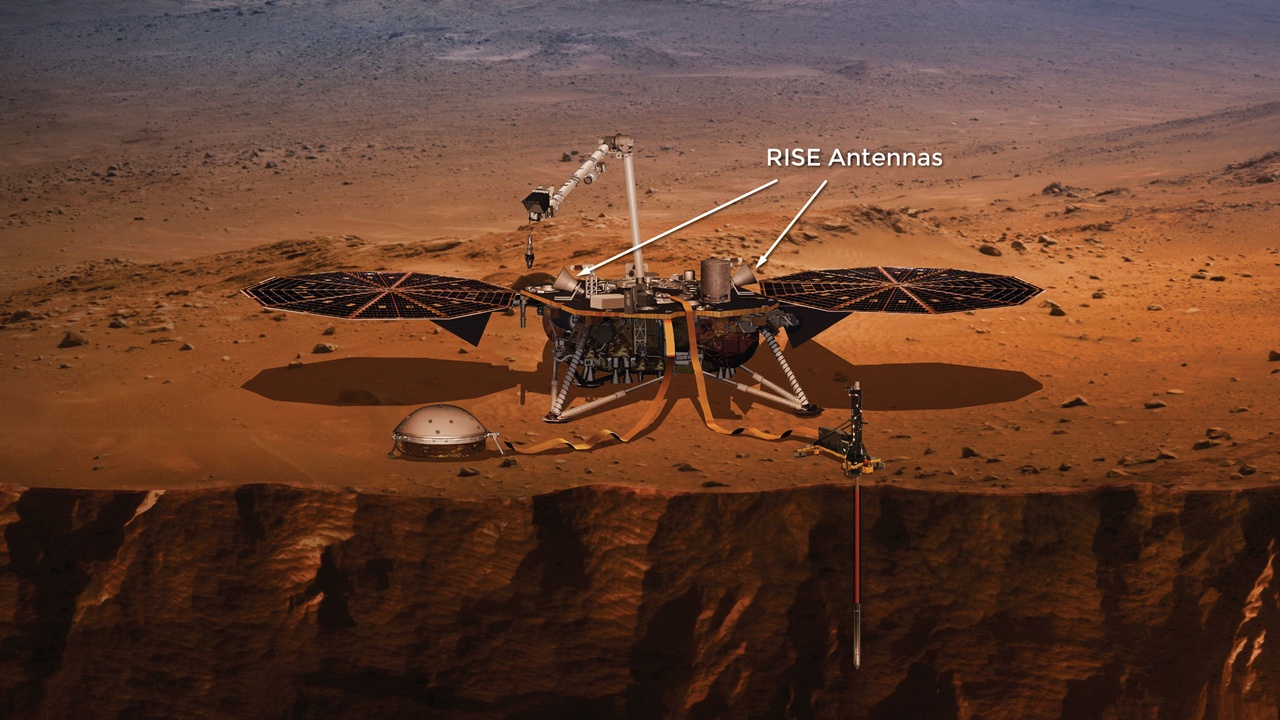A day on Earth last about 24 hours. The word “about” in that sentence does a lot of heavy lifting because Earth’s rate of rotation changes all the time. Not by much, only fractions of milliseconds, but it means our common 24-hour day only really applies at human scales.
There are several things that can change the Earth’s rotation. The gravitational tug of the Moon and tides are gradually slowing Earth over millions of years. The melting of ice in the polar regions, the tectonic shift of the Earth’s crust during earthquakes, and even the draining of water from the aquifer. Earth is a geologically and biologically active world, so it’s only natural that Earth’s rotation rate is also dynamic. But a recent study shows that the rotation of Mars is also changing, which is a bit of a surprise.
Astronomers can measure changes in the Earth’s rotation on the order of nanoseconds, and can even measure tectonic shifts on the order of millimeters. They do this using very long baseline interferometry, where multiple radio telescopes observe a distant quasar. Since quasars are billions of light-years away, they are effectively fixed points in the sky. We don’t have any radio telescopes on Mars, so how can we measure small changes in its rotation?

The team did this by using data from NASA’s InSight lander. Over its 4-year mission, InSight ran an experiment known as the Rotation and Interior Structure Experiment, or RISE. Basically, radio telescopes on Earth would beam a signal to RISE, which would bounce the signal back. The RISE signal was Doppler shifted due to the relative orbital motions of Earth and Mars and their rotations. Since we know Earth’s rotation and the orbits of Earth and Mars extremely well, the long gathering of data allowed the team to measure the rotation of Mars and how it changed over time. They found that the Martian rotation is increasing by 4 milliarcseconds per year squared. That means the Martian day is shortening by a fraction of a millisecond per year.
But Mars doesn’t have a large moon, and it isn’t geologically active. So why is it speeding up? One strong possibility is that the interior of Mars is sloshing around. The RISE data didn’t just measure the rotation rate of Mars, it also measured an effect known as nutation. This is a wobble of a planet’s axis over time and depends in part on the mass distribution of the planet. From the RISE data, the team estimates that the core of Mars has a radius of about 1,800 kilometers, which is about half the 3,390-kilometer radius of Mars itself. The data also suggests the core doesn’t have a uniform density, but rather layers of varying density. Fluid layers within the core could rotate at a different rate than the solid outer layer, and a transfer of rotational momentum between them could be causing Mars to speed up.
It will take more observations to fully understand this process. But we now know that when humans settle on Mars, they will have to adjust their clocks from time to time, just as we do on Earth.
Reference: Le Maistre, Sébastien, et al. “Spin state and deep interior structure of Mars from InSight radio tracking.” Nature (2023): 1-5.

